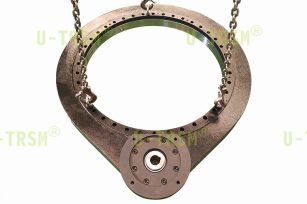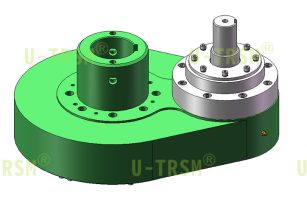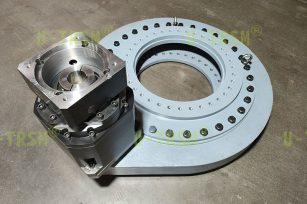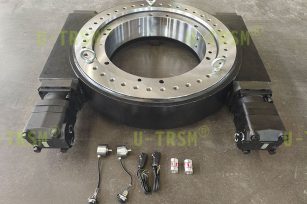Latest Products
We keep on updating and iterating our products, optimizing the structural design and creating a more scientific and reliable slewing drive device.
-
 Selection and characteristics of slewing d...
Selection and characteristics of slewing d...This slewing drive is used in automated mixing equipment. The customer requires that it rotate in the same direction ...
Detailed instructions Send mail -
 Analysis of the high speed rotating double...
Analysis of the high speed rotating double...This double row ball gear type slew drive is used in automation equipment. The customer requires ultra-high speed ope...
Detailed instructions Send mail -
 30855 slew drive assembly: precise protect...
30855 slew drive assembly: precise protect...Introduction In the field of industrial transmission, U-TRSM has always been a leader in innovation, committed...
Detailed instructions Send mail -
 High load slewing drive solution for deep ...
High load slewing drive solution for deep ...This slewing drive is used in marine machinery and equipment, suitable for underwater locations at depths of up to 30...
Detailed instructions Send mail
How to install the slewing drive and what should be paid attention to?
Publish time:2022/02/08 News Views:507
1. Preparation before installation of slewing drive
(1). Clean the slewing drive and installation structure:
Remove foreign matter such as paint residue, solder beads, burrs, etc. from the mounting support surface. The corrosion protection coating on the slewing drive bearing surfaces should also be removed. Be careful not to infiltrate the cleaning fluid into the slewing drive; do not use cleaning materials that will corrode the seals.
(2). Inject lubricating oil into the slewing drive device:
The slewing drive has been filled with grease before leaving the factory, but before the initial operation, it should be lubricated again, especially for the slewing drive that has been stored for a long time, it should be ensured that the slewing drive is completely lubricated. The grease must be the one specified on the delivery drawing.
(3). Select the appropriate mounting bolts:
• Use the bolt size, quantity and quality grade specified in the installation instructions.
• A clamping ratio (clamping length to bolt diameter) should be observed from a minimum value of ≥5 to a maximum value of ≤10.
• Bolts with fully threaded shafts are not permitted.
• Failure to comply can affect the functionality and longevity of the bolted joint as well as its durability.
• If the allowable interface pressure is exceeded, use a gasket of suitable size and strength.
• Do not use old bolts, nuts and washers.
(4). Selection of tightening torque:
• Under normal conditions, the mounting bolts are fully secured with the correct preload.
• Mounting bolts can be secured with Loctite threadlocker.
• Split rings, split washers, etc. are not permitted.
• If using washers, make sure they have the correct strength class.
2. The process of installing the slewing drive
(1). Position the slewing drive and fix it with bolts:
• Lightly lubricate bolt threads to ensure even frictional resistance (does not apply to bolt locking devices with adhesive).
• Cross preload bolts including washers in three steps with 30%, 80%, 100% tightening torque or hydraulically applied preload.
• Repeat the above steps for bearing rings that are not yet bolted.
When using hydraulic fastening devices, the preload should not exceed 90% of the yield stress.
(2). Determine the existing tilt clearance and backlash:
• Tilt clearance increases with raceway wear. In order to determine the increase in tilt play, basic measurements must be carried out after installation and before the slewing drive is put into operation for the first time. The permissible increase in tilt clearance is 1.5 to 2 mm.
• Gear wear is signaled by increased backlash, the amount of backlash allowed depends on the type of slewing drive applied.
• Record all measurements.
All measurements are made at the same measurement point, the same load, the same position of the bearing rings relative to each other and in the same order. All measurements should be recorded. For purely axial or radial loads, check for tilt clearance by applying additional tilt load.
(3). Operation test:
If the slewing drive is installed correctly, the slewing drive should rotate evenly, and factors such as the deviation of the installation structure and external loads will affect the friction torque.
• Rotate the mounted slew drive several times.
• Check that the slew drive is smooth and free of jumping.
• Carry out further test runs under full load.
After running the test, recheck the tightening torque of the mounting bolts.
- U-TRSM introduces you to the heat treatmen...
- How to correctly choose bolts for installi...
- How to choose the external gear slewing dr...
- Influence of rotational inertia on the sle...
- How are the slew drives packaged?
- Why do slewing bearing gears need to be gr...
- Why are high-precision spur gear slew driv...
- Why is worm gear and worm shaft transmissi...










